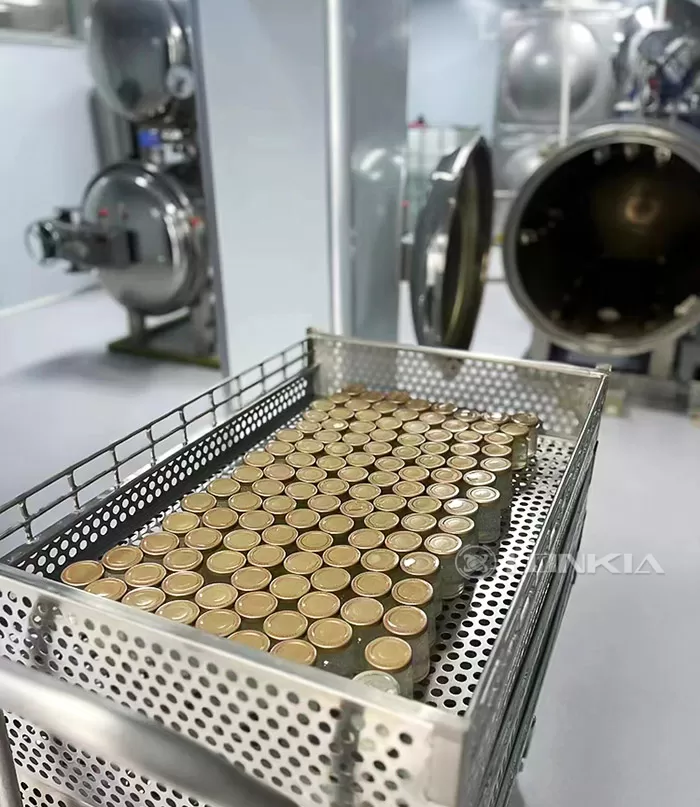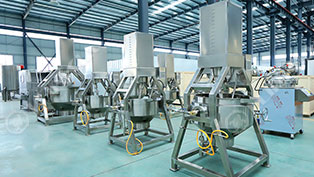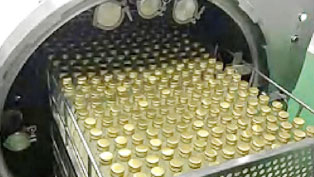In the food processing industry, maintaining consistent quality and safety is crucial, especially when using water spray retorts for sterilization. These systems ensure that food products are free from harmful microorganisms while preserving their taste, texture, and nutritional value. However, to achieve optimal results, manufacturers must follow best practices to prevent inconsistencies in sterilization.
Below are some essential tips and best practices for maintaining high-quality food production with water spray retorts.
1. Ensure Uniform Heat Distribution
🔍 Why It Matters:
Uneven heat distribution can cause incomplete sterilization, leading to food spoilage or safety risks.
✅ Best Practices:
- Use high-efficiency spray nozzles to ensure even water distribution across all containers.
- Regularly check and clean circulation pumps and spray systems to prevent blockages.
- Optimize loading configurations to allow uniform heat penetration throughout the batch.
- Implement real-time monitoring sensors to track temperature variations.
2. Optimize Temperature and Pressure Control
🔍 Why It Matters:
Fluctuations in temperature or pressure can negatively impact food texture and packaging integrity.
✅ Best Practices:
- Utilize automated control systems with PID regulation for precise temperature and pressure adjustments.
- Set optimal sterilization cycle parameters based on the type of food and packaging.
- Avoid sudden pressure changes to prevent damage to flexible or delicate packaging.
- Conduct routine calibration of temperature and pressure sensors to ensure accuracy.

3. Use Proper Cooling Techniques
🔍 Why It Matters:
Improper cooling can lead to overcooking, texture loss, or microbial contamination.
✅ Best Practices:
- Implement gradual cooling phases to prevent thermal shock in packaging.
- Use filtered cooling water to maintain hygiene and prevent contamination.
- Ensure consistent water spray patterns for even cooling across all products.
- Monitor cooling rates to meet regulatory and quality control standards.
4. Maintain Hygiene and Clean Equipment Regularly
🔍 Why It Matters:
Residue buildup and microbial contamination can compromise food safety and product consistency.
✅ Best Practices:
- Schedule regular cleaning and maintenance using CIP (Clean-in-Place) systems.
- Use stainless steel construction to prevent corrosion and contamination risks.
- Inspect and replace worn-out seals, gaskets, and nozzles to maintain hygiene.
- Train staff on proper sanitation procedures to reduce contamination risks.
5. Choose the Right Packaging Materials
🔍 Why It Matters:
Incompatible packaging materials can rupture, deform, or fail to withstand high temperatures and pressure during sterilization.
✅ Best Practices:
- Test packaging compatibility with water spray retort conditions before full-scale production.
- Use materials that can withstand high heat and pressure without compromising product quality.
- Ensure proper sealing and venting to prevent pressure imbalances inside the package.
- Conduct packaging integrity tests before and after sterilization.
6. Monitor and Document Every Sterilization Cycle
🔍 Why It Matters:
Accurate data tracking ensures consistent quality, regulatory compliance, and process optimization.
✅ Best Practices:
- Utilize real-time data logging systems to track temperature, pressure, and cycle duration.
- Maintain detailed batch records for traceability and audits.
- Conduct routine validation of sterilization cycles to confirm effectiveness.
- Implement automated alarm systems to detect and correct deviations immediately.
Conclusion
Maintaining consistent food quality in water spray retort sterilization requires precise control, proper maintenance, and quality monitoring. By following these best practices, manufacturers can enhance food safety, shelf life, and production efficiency while minimizing waste and operational risks.
At LONKIA Machinery, we provide high-performance water spray retort systems designed for reliability and consistency. Contact us today to learn how our solutions can optimize your food processing operations!



